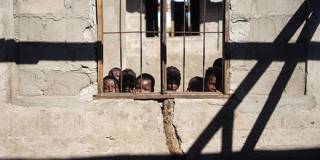At a time when the world should be progressing rapidly toward the UN Sustainable Development Goal of ensuring “inclusive and equitable quality education” for all, it faces a deepening crisis instead. To address it, the G7 and developing countries alike must offer concrete commitments that match the scale of the challenge.
WASHINGTON, DC – Aichetou, a 14-year-old girl, lives on the outskirts of Nouakchott, the capital of Mauritania, in Africa’s Sahel region. Every day, she makes a difficult trek through the sand to get to a school with no drinking water or sanitation, where she barely learns, owing to a lack of textbooks and trained teachers. And she is not alone: tens of millions of schoolchildren worldwide face similar circumstances, while 262 million children and youth are not in school at all.
At a time when we should be progressing rapidly toward the United Nations Sustainable Development Goal of ensuring “inclusive and equitable quality education” for all (SDG4), the world is facing a deepening education crisis. True, some countries are making strides: in France, every child receives a compulsory education, which will soon begin at age three.
But millions of children elsewhere will never set foot inside a classroom. If the status quo persists, more than half – 825 million – of the 1.6 billion young people alive in 2030 will not have the skills needed to thrive economically. Girls face particularly bleak prospects, owing to factors like cultural norms, gender-based violence, and early marriage.

WASHINGTON, DC – Aichetou, a 14-year-old girl, lives on the outskirts of Nouakchott, the capital of Mauritania, in Africa’s Sahel region. Every day, she makes a difficult trek through the sand to get to a school with no drinking water or sanitation, where she barely learns, owing to a lack of textbooks and trained teachers. And she is not alone: tens of millions of schoolchildren worldwide face similar circumstances, while 262 million children and youth are not in school at all.
At a time when we should be progressing rapidly toward the United Nations Sustainable Development Goal of ensuring “inclusive and equitable quality education” for all (SDG4), the world is facing a deepening education crisis. True, some countries are making strides: in France, every child receives a compulsory education, which will soon begin at age three.
But millions of children elsewhere will never set foot inside a classroom. If the status quo persists, more than half – 825 million – of the 1.6 billion young people alive in 2030 will not have the skills needed to thrive economically. Girls face particularly bleak prospects, owing to factors like cultural norms, gender-based violence, and early marriage.